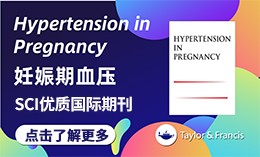样式: 排序: IF: - GO 导出 标记为已读
-
The model-as-a-resource paradigm for geoscience digital ecosystems Environ. Model. Softw. (IF 4.8) Pub Date : 2024-03-04 Paolo Mazzetti, Stefano Nativi
A long-term goal of environmental science and Earth observation is to enable the creation of a “Model Web” of semantically interconnected data and models. Geospatial models are usually exposed on the Web as services accessible through heterogeneous interfaces. However, such services, which represent instances of the paradigm called Model-as-a-Service (MaaS), cannot be easily exploited beyond their
-
A prototype field-to-publication data system for a multi-variable permafrost observation network Environ. Model. Softw. (IF 4.8) Pub Date : 2024-03-04 Nicholas Brown, Stephan Gruber, Peter Pulsifer, Amos Hayes
Analysis and prediction of permafrost change are hampered by lack of observational data. We implement a permafrost data management system to support multi-variable permafrost observation networks. It addresses five key challenges we identified for permafrost data management and publication: (1) existing data management strategies do not scale well, (2) data users have different skills and needs, (3)
-
HydroCompute: An open-source web-based computational library for hydrology and environmental sciences Environ. Model. Softw. (IF 4.8) Pub Date : 2024-03-03 Carlos Erazo Ramirez, Yusuf Sermet, Ibrahim Demir
We present HydroCompute, a high-performance client-side computational library specifically designed for web-based hydrological and environmental science applications. Leveraging state-of-the-art technologies in web-based scientific computing, the library facilitates both sequential and parallel simulations, optimizing computational efficiency. Employing multithreading via web workers, HydroCompute
-
Towards reusable building blocks for agent-based modelling and theory development Environ. Model. Softw. (IF 4.8) Pub Date : 2024-03-03 Uta Berger, Andrew Bell, C. Michael Barton, Emile Chappin, Gunnar Dreßler, Tatiana Filatova, Thibault Fronville, Allen Lee, Emiel van Loon, Iris Lorscheid, Matthias Meyer, Birgit Müller, Cyril Piou, Viktoriia Radchuk, Nicholas Roxburgh, Lennart Schüler, Christian Troost, Nanda Wijermans, Tim G. Williams, Marie-Christin Wimmler, Volker Grimm
Despite the increasing use of standards for documenting and testing agent-based models (ABMs) and sharing of open access code, most ABMs are still developed from scratch. This is not only inefficient, but also leads to and often inconsistent implementations of the same theories in computational code and delays progress in the exploration of the functioning of complex social-ecological systems (SES)
-
An integrative modelling framework for predicting the compound flood hazards induced by tropical cyclones in an estuarine area Environ. Model. Softw. (IF 4.8) Pub Date : 2024-03-03 Haoxuan Du, Kai Fei, Jiahao Wu, Liang Gao
In this study, a novel numerical model is first developed, which can simulate compound floods under a framework comprehensively considering the combined effects of tide, river flow, rainfall, and wind. The modelling framework is applied to reproduce an extreme compound flood event in the Pearl River Delta caused by Typhoon Hato (2017). The model is estimated to perform reasonably well, which can yield
-
Modelling forests as social-ecological systems: A systematic comparison of agent-based approaches Environ. Model. Softw. (IF 4.8) Pub Date : 2024-03-02 Hanna Ekström, Nils Droste, Mark Brady
The multifunctionality of forest systems calls for appropriately complex modelling approaches to capture social and ecosystem dynamics. Using a social-ecological systems framework, we review the functionality of 31 existing agent-based models applied to managed forests. Several applications include advanced cognitive and emotional decision-making, crucial for understanding complex sustainability challenges
-
Spatially targeted afforestation to minimize sediment loss from a catchment: An efficient hill climbing method considering spatial interaction Environ. Model. Softw. (IF 4.8) Pub Date : 2024-02-29 Grethell Castillo-Reyes, René Estrella, Dirk Roose, Floris Abrams, Gerdys Jiménez-Moya, Jos Van Orshoven
Based on soil erosion and sediment transport processes, CAMF (Cellular Automata-based heuristic for Minimizing Flow) selects sites for afforestation to minimize sediment influx at a catchment’s outlet. CAMF uses a raster representation of the catchment and a steepest ascent hill-climbing optimization heuristic, safeguarding spatial interaction. Its execution time can be prohibitively long for large
-
Development of a Spatially Distributed Snow and Glacier Melt Runoff Model (SDSGRM) for data scarce high-altitude river basins Environ. Model. Softw. (IF 4.8) Pub Date : 2024-02-29 V. Nunchhani, Ngahorza Chiphang, Arnab Bandyopadhyay, Aditi Bhadra
Spatially Distributed Snow and Glacier-melt Runoff Model (SDSGRM) was developed to evaluate the glacier-melt (GM), snowmelt (SM) and rainfall induced runoff contribution to the total stream runoff. It includes temperature index, radiation-temperature index, advection driven index and energy balance methods and generates gridded outputs. The model was successfully calibrated (NSE and R more than 0.7
-
Pyraingen: A python package for constrained continuous rainfall generation Environ. Model. Softw. (IF 4.8) Pub Date : 2024-02-26 Caleb Dykman, Ashish Sharma, Conrad Wasko, Rory Nathan
Continuous rainfall is often required for flood estimation and water resources assessment. However, stochastically generated continuous rainfall records are typically inconsistent with intensity-frequency-durations (IFDs) used in design, and do not simulate the rainfall behaviour we can expect in a future warmer climate. Here, we present the python package to generate ensembles of continuous subdaily
-
Data-driven early warning indicator for the overall stability of rock slopes: An example in hydropower engineering Environ. Model. Softw. (IF 4.8) Pub Date : 2024-02-22 Jietao Sun, Haifeng Li, Yi Liu
In hydropower engineering, monitoring the instability of rock slopes is a crucial undertaking. Current early warning models of rock slopes lack consideration of the overall stability and cannot reflect the stability differences of different structure forms. Addressing these issues, we have successfully developed an integrative early warning indicator for the overall stability of rock slopes, utilizing
-
-
Nature-inspired optimal tuning of input membership functions of fuzzy inference system for groundwater level prediction Environ. Model. Softw. (IF 4.8) Pub Date : 2024-02-21 Vipul Bhadani, Abhilash Singh, Vaibhav Kumar, Kumar Gaurav
We present a novel regression algorithm that combines a Fuzzy Inference System (FIS) with a nature-inspired algorithm to predict variations in GroundWater Levels (GWLs). Initially, we considered several input features, including precipitation, temperature, evaporation, relative humidity, soil type, and GWL Lag. A feature importance analysis using regression tree ensemble learning reveals GWL lag as
-
Optimizing sediment transport models by using the Monte Carlo simulation and deep neural network (DNN): A case study of the Riba-Roja reservoir Environ. Model. Softw. (IF 4.8) Pub Date : 2024-02-20 Danial Dehghan-Souraki, David López-Gómez, Ernest Bladé-Castellet, Antonia Larese, Marcos Sanz-Ramos
This study emphasizes the importance of accurate calibration in sediment transport models and highlights the transformative role of artificial intelligence (AI), specifically machine learning, in improving accuracy and computational efficiency. Extensive experiments were carried out in the Riba-Roja reservoir, which is located in the northeastern Iberian Peninsula. The accumulated sediment volume (ASV)
-
Agent-based models of groundwater systems: A review of an emerging approach to simulate the interactions between groundwater and society Environ. Model. Softw. (IF 4.8) Pub Date : 2024-02-17 Marcos Canales, Juan Castilla-Rho, Rodrigo Rojas, Sebastian Vicuña, James Ball
-
A three-dimensional numerical model for variably saturated groundwater flow using meshless weak-strong form method Environ. Model. Softw. (IF 4.8) Pub Date : 2024-02-17 Jiayu Fang, Mohammad Z. Al-Hamdan, Andrew M. O'Reilly, Yavuz Ozeren, James R. Rigby
Meshless numerical models have attracted much attention due to the circumvention of troublesome mesh generation. Current meshless numerical groundwater (GW) models either focus on only pumping in fully saturated zone or merely simulate variably saturated GW flow without pumping. However, these two components are both essential for a GW model to represent practical real-world conditions. This gap is
-
Challenges and opportunities when bringing machines onto the team: Human-AI teaming and flood evacuation decisions Environ. Model. Softw. (IF 4.8) Pub Date : 2024-02-16 Vidya Samadi, Keri K. Stephens, Amanda Hughes, Pamela Murray-Tuite
-
An annotated timeline of sensitivity analysis Environ. Model. Softw. (IF 4.8) Pub Date : 2024-02-14 Stefano Tarantola, Federico Ferretti, Samuele Lo Piano, Mariia Kozlova, Alessio Lachi, Rossana Rosati, Arnald Puy, Pamphile Roy, Giulia Vannucci, Marta Kuc-Czarnecka, Andrea Saltelli
The last half a century has seen spectacular progresses in computing and modelling in a variety of fields, applications, and methodologies. Over the same period, a cross-disciplinary field known as sensitivity analysis has been making its first steps, evolving from the design of experiments for laboratory or field studies, also called ‘in-vivo’, to the so-called experiments ‘in-silico’. Some disciplines
-
Enhanced watershed model evaluation incorporating hydrologic signatures and consistency within efficient surrogate multi-objective optimization Environ. Model. Softw. (IF 4.8) Pub Date : 2024-02-14 Wei Xia, Taimoor Akhtar, Wei Lu, Christine A. Shoemaker
This paper presents a new framework for calibrating computationally expensive watershed models with multi-objective optimization methods and hydrological consistency analysis. The analysis evaluates different algorithms' efficiencies for finding watershed model calibration solutions within a limited budget. Two surrogate multi-objective algorithms GOMORS and ParEGO are compared to five evolutionary
-
Improving probabilistic streamflow predictions through a nonparametric residual error model Environ. Model. Softw. (IF 4.8) Pub Date : 2024-02-13 Jiyu Liang, Shuguang Liu, Zhengzheng Zhou, Guihui Zhong, Yiwei Zhen
Reliable probabilistic hydrological prediction requires appropriate handling of residual errors, which can pose considerable complexity. This paper proposes a nonparametric residual error (NRE) model that effectively captures the statistical characteristics of raw residuals. The NRE model employs a local linear estimator with a robust bandwidth selector to estimate the regression and conditional volatility
-
Flood prediction using nonlinear instantaneous unit hydrograph and deep learning: A MATLAB program Environ. Model. Softw. (IF 4.8) Pub Date : 2024-02-12 Minyeob Jeong, Changhwan Kim, Dae-Hong Kim
In this study, we developed a MATLAB program for flood prediction in a watershed. The program consists of three modules. The instantaneous unit hydrograph (IUH) generation module utilizes a power-law based interpolation method to generate IUHs. The generated IUH is a function of the rainfall excess intensity and therefore considers nonlinearity. The long short-term memory (LSTM) module employs “lstmLayer”
-
Applications of XGBoost in water resources engineering: A systematic literature review (Dec 2018–May 2023) Environ. Model. Softw. (IF 4.8) Pub Date : 2024-02-10 Majid Niazkar, Andrea Menapace, Bruno Brentan, Reza Piraei, David Jimenez, Pranav Dhawan, Maurizio Righetti
Applications of Machine Learning methods make a paradigm shift in the domain of water resources engineering. This study not only presents the story of emerging eXtreme Gradient Boosting (XGBoost) but also encompasses a thorough review XGBoost utilization to problems in hydrology, hydraulics, and hydroclimatology. According to the literature, XGBoost was employed for hydrological modelling, forecasting
-
Improvement of performance of in-situ virtual monitoring system of the occurrence probability for high concentrations of naturally occurring radioactive materials in groundwater through the solution of the data imbalance problem Environ. Model. Softw. (IF 4.8) Pub Date : 2024-02-10 Hyeongmok Lee, Jina Jeong, Sungwook Choung
This paper presents two data-driven virtual sensors to estimate the time-series of the probability of high-concentration occurrence of naturally occurring radioactive materials (NORMs; U and Rn) in groundwater based on the in-situ groundwater quality monitoring data and geological information. The random forest was applied to estimate the NORM concentration based on the actual in-situ groundwater quality
-
pyMANGA: A modular, open and extendable software platform for modeling of forest and vegetation dynamics Environ. Model. Softw. (IF 4.8) Pub Date : 2024-02-10 Marie-Christin Wimmler, Jasper Bathmann, Jonas Vollhüter, Uta Berger
Agent-based vegetation models are a widely used tool in ecology, for example, to understand and predict the response of vegetation to environmental change. Models are based on well-established descriptions of processes such as vegetation establishment, growth and mortality. However, they are often developed from scratch, which can be inefficient. Here we present pyMANGA, a free and open-source platform
-
An open online simulation strategy for hydrological ensemble forecasting Environ. Model. Softw. (IF 4.8) Pub Date : 2024-02-10 Yuanqing He, Min Chen, Yongning Wen, Qingyun Duan, Songshan Yue, Jiapeng Zhang, Wentao Li, Ruochen Sun, Zizhuo Zhang, Ruoyu Tao, Wei Tang, Guonian Lü
Hydrological ensemble forecasting is crucial for flood forecasting. However, the centralized architecture of hydrological ensemble forecasting systems requires time- and labour-intensive downloads and the installation of executable models and methods. This usage pattern impedes the reusability of forecasting models and techniques. To address these limitations, we propose an open online simulation strategy
-
A secondary modal decomposition ensemble deep learning model for groundwater level prediction using multi-data Environ. Model. Softw. (IF 4.8) Pub Date : 2024-02-07 Xuefei Cui, Zhaocai Wang, Nannan Xu, Junhao Wu, Zhiyuan Yao
Groundwater level (GWL) prediction is important for ecological protection and resource utilization; it helps in formulating policies for artificial groundwater recharge, modifying the number of extraction wells, etc., and can support sustainable human development as well as inform water resource management decisions. However, climate change, anthropogenic impacts, and the complex coupling between surface
-
Academic influence index evaluation report of geographic simulation models (2022) Environ. Model. Softw. (IF 4.8) Pub Date : 2024-01-30 Kai Xu, Daniel P. Ames, Albert J. Kettner, C. Michael Barton, Anthony J. Jakeman, Renyu Chen, Min Chen
Recent years have witnessed a significant increase in the availability and number of geographic simulation models across various domains, leading to challenges in evaluating their relative value. Traditional model evaluations typically compare simulation results with measured data or other models. This report presents the application of the newly “Model Academic Influence Index (MAI)" method which
-
Simulating event-based pesticide transport with runoff and erosion; OpenLISEM-pesticide v.1 Environ. Model. Softw. (IF 4.8) Pub Date : 2024-01-24 Meindert C. Commelin, Jantiene E.M. Baartman, Jan G. Wesseling, Victor Jetten
-
Introducing QAnnAGNPS - A QGIS plugin to facilitate the use of AnnAGNPS (Annualized Agricultural Nonpoint source model) Environ. Model. Softw. (IF 4.8) Pub Date : 2024-01-25 Iñigo Barberena, Miguel Ángel Campo-Bescós, Javier Casalí
AnnAGNPS is a watershed-scale hydrological model designed to analyze the impact of nonpoint source pollution in agricultural environments. Its unique capabilities have defined it as an essential model that is used globally to evaluate agricultural management scenarios. However, it does not currently have a user-friendly graphical interface that provides a simple way for users to perform simulations
-
Corrigendum to “Development of a knowledge-sharing parallel computing approach for calibrating distributed watershed hydrologic models” [Environ. Model. Software 164 (2023) 105708] Environ. Model. Softw. (IF 4.8) Pub Date : 2024-01-23 Marjan Asgari, Wanhong Yang, John Lindsay, Hui Shao, Yongbo Liu, Rodrigo De Queiroga Miranda, Maryam Mehri Dehnavi
Abstract not available
-
Commentary on Antosz et al. (2023): The role of macro-micro-macro frameworks and critical realism in agent-based modelling Environ. Model. Softw. (IF 4.8) Pub Date : 2024-01-19 Robin C. Purshouse, Charlotte Buckley, Alan Brennan
Antosz and colleagues’ review of the role of theory in agent-based modelling (ABM) makes important recommendations for modelling practitioners. However, macro-micro-macro frameworks are not necessarily as reliant on existing theory as the review suggests. Adopting a critical realist perspective to ABM design would help to deliver the recommendations, within which macro-micro-macro frameworks can play
-
Optimization of waterproofing and drainage measures for open-pit mines based on seasonal rainfall time series prediction Environ. Model. Softw. (IF 4.8) Pub Date : 2024-01-14 Shuai Wang, Bo Cao, Runcai Bai, Guangwei Liu
-
MitH: A framework for Mitigating Hygroscopicity in low-cost PM sensors Environ. Model. Softw. (IF 4.8) Pub Date : 2024-01-10 Martina Casari, Laura Po
Air quality estimation using low-cost sensors is a pressing issue, with meteorological factors often causing measurement discrepancies. Hygroscopicity, arising from humidity’s interaction with particulates, leads to inaccurate PM concentration readings in laser-scattering low-cost PM sensors. Common remedies involve data removal during high relative humidity or reference station calibration, but these
-
Study on multiscale-multivariate prediction and risk assessment of urban flood Environ. Model. Softw. (IF 4.8) Pub Date : 2024-01-13 Yuhao Wang, Honglin Xiao, Dong Wang, Jinping Zhang
Few studies have explored the impact of drivers on urban flood at multi-time scales, and few studies have assessed the urban flood risk based on accurate description and quantification of the intrinsic correlation between urban flood and its drivers. Therefore, this study develops a multiscale-multivariate prediction model for flood volume (FV) using wavelet transform, and a flood risk assessment model
-
Comparing single and multiple objective constrained optimization algorithms for tuning a groundwater remediation system Environ. Model. Softw. (IF 4.8) Pub Date : 2024-01-09 Michael N. Fienen, Nicholas T. Corson-Dosch, L. Kalle Jahn, Jeremy T. White
-
Appraisal of EnMAP hyperspectral imagery use in LULC mapping when combined with machine learning pixel-based classifiers Environ. Model. Softw. (IF 4.8) Pub Date : 2024-01-10 Christina Lekka, George P. Petropoulos, Spyridon E. Detsikas
The recent availability of satellite hyperspectral imaging combined with the developments in the classification techniques have paved the way towards improving our ability to obtain information on the spatiotemporal distribution of land use/land cover (LULC) at improved accuracy. In this context, the present study aims at evaluating the combined use of the recently launched Environmental Mapping and
-
An open-source application software for spatial prediction of permanent displacements in earthquake-induced landslides by the Newmark sliding block method: pyNewmarkDisp Environ. Model. Softw. (IF 4.8) Pub Date : 2024-01-06 Exneyder A. Montoya-Araque, Silvana Montoya-Noguera, Fernando Lopez-Caballero
This paper presents pyNewmarkDisp, an open-source application software developed in Python for calculating the spatial distribution of permanent displacements (up) in earthquake-triggered shallow landslides through the Newmark sliding block method. upare often estimated by simplified methods using empirical correlations instead of the direct Newmark method in which ground motion accelerations exceeding
-
Loss functions for spatial wildfire applications Environ. Model. Softw. (IF 4.8) Pub Date : 2024-01-06 Shona Elliot- Kerr, James Hilton, Kate Parkins, Ujjwal K.C., Carolyn Huston, Willian Swedosh, Trent Penman
Spatial predictions of wildfire spread are used operationally and in risk estimation. It is important that their outputs are validated to quantify predictive performance and uncertainty. There are numerous loss functions for this simulation validation. Our paper synthesises ten common and five novel loss functions for evaluating the performance of wildfire predictions against observed or simulated
-
Balancing observational data and experiential knowledge in environmental flows modeling Environ. Model. Softw. (IF 4.8) Pub Date : 2024-01-05 Meghan Mussehl, J. Angus Webb, Avril Horne, Declan O'Shea
Environmental flow (e-flow) decision making relies on flow-ecology models to predict ecological outcomes under different flow regimes. While expert knowledge has traditionally informed these models, there is increasing use of data-driven approaches. We investigated data integration for Bayesian conditional probability networks (CPNs) developed through expert elicitation in an e-flows assessment in
-
A serious game approach for lake modeling and management: The EscapeBLOOM Environ. Model. Softw. (IF 4.8) Pub Date : 2024-01-05 Dianneke van Wijk, Xiangzhen Kong, Harmen Knap, Annette B.G. Janssen
Environmental models are valuable tools, yet, communication about model procedures and results between modelers and non-modelers is complicated by different levels of understanding. Game design may help to bridge this gap through learning by playing. Here we present the “EscapeBLOOM”, a digital “Escape Room” in which teams aim to save a lake from a harmful algal bloom while learning about lake models
-
A practice-oriented framework for stationary and nonstationary flood frequency analysis Environ. Model. Softw. (IF 4.8) Pub Date : 2024-01-03 Cuauhtémoc Tonatiuh Vidrio-Sahagún, Jake Ruschkowski, Jianxun He, Alain Pietroniro
In flood frequency analysis (FFA), choices of distribution and methods can hinder the reproducibility of results. Besides, changes in climate, land use/cover, and water management can induce nonstationarity. Frameworks to select between stationary FFA (S-FFA) and nonstationary FFA (NS-FFA) are lacking, and NS-FFA tools are limited. Therefore, this paper introduces a systematic and software-supported
-
SSIMS-Flow: Image velocimetry workbench for open-channel flow rate estimation Environ. Model. Softw. (IF 4.8) Pub Date : 2023-12-29 Robert Ljubičić, Silvano Fortunato Dal Sasso, Budo Zindović
Image-based hydrological measurement techniques have surged in popularity over the last decade, with the most common type of data obtained being the open-channel surface velocity field and flow rate. The lack of a feature-rich image velocimetry software often forces practitioners to use multiple tools as part of a cumbersome workflow, which restricts the uptake of such methods and reduces the reproducibility
-
Urban flood extent segmentation and evaluation from real-world surveillance camera images using deep convolutional neural network Environ. Model. Softw. (IF 4.8) Pub Date : 2023-12-27 Yidi Wang, Yawen Shen, Behrouz Salahshour, Mecit Cetin, Khan Iftekharuddin, Navid Tahvildari, Guoping Huang, Devin K. Harris, Kwame Ampofo, Jonathan L. Goodall
This study explores the use of Deep Convolutional Neural Network (DCNN) for semantic segmentation of flood images. Imagery datasets of urban flooding were used to train two DCNN-based models, and camera images were used to test the application of the models with real-world data. Validation results show that both models extracted flood extent with a mean F1-score over 0.9. The factors that affected
-
Spatiotemporal prediction of carbon emissions using a hybrid deep learning model considering temporal and spatial correlations Environ. Model. Softw. (IF 4.8) Pub Date : 2023-12-23 Yixiang Chen, Yuxin Xie, Xu Dang, Bo Huang, Chao Wu, Donglai Jiao
Accurate prediction of carbon emissions plays a crucial role in enabling government decision-makers to formulate appropriate policies and plan necessary response measures in a timely manner. This study explored the spatiotemporal prediction methods for carbon emissions from temporal and spatial correlation perspectives. Specifically, a deep learning-based hybrid prediction framework for carbon emissions
-
Application of artificial intelligence methods to model the effect of grass curing level on spread rate of fires Environ. Model. Softw. (IF 4.8) Pub Date : 2023-12-22 Sadegh Khanmohammadi, Miguel G. Cruz, Emadaldin Mohammadi Golafshani, Yu Bai, Mehrdad Arashpour
Artificial intelligence (AI) enables new approaches to fire behaviour models of operational relevance, including prescribed burns. This is particularly important in modelling of processes that are poorly understood, such as live fuel's effect on fire propagation. The objective of this study was to apply AI algorithms to quantify the effect of the proportion of dead fuels in a senescing grassland, the
-
A sound understanding of a cropping system model with the global sensitivity analysis Environ. Model. Softw. (IF 4.8) Pub Date : 2023-12-22 Annachiara Colombi, Marialaura Bancheri, Marco Acutis, Angelo Basile, Marco Botta, Alessia Perego
-
Automatic classification of land cover from LUCAS in-situ landscape photos using semantic segmentation and a Random Forest model Environ. Model. Softw. (IF 4.8) Pub Date : 2023-12-16 Laura Martinez-Sanchez, Linda See, Momchil Yordanov, Astrid Verhegghen, Neija Elvekjaer, Davide Muraro, Raphaël d’Andrimont, Marijn van der Velde
Spatially explicit information on land cover (LC) is commonly derived using remote sensing, but the lack of training data still remains a major challenge for producing accurate LC products. Here, we develop a computer vision methodology to extract LC information from photos from the Land Use-Land Cover Area Frame Survey (LUCAS). Given the large number of photographs available and the comprehensive
-
Evaluation of surrogate flood models for the use in impact-based flood warning systems at national scale Environ. Model. Softw. (IF 4.8) Pub Date : 2023-12-20 Markus Mosimann, Martina Kauzlaric, Simon Schick, Olivia Martius, Andreas Paul Zischg
-
WaterpyBal: A comprehensive open-source python library for groundwater recharge assessment and water balance modeling Environ. Model. Softw. (IF 4.8) Pub Date : 2023-12-18 Ashkan Hassanzadeh, Enric Vázquez-Suñé, Sonia Valdivielso, Mercè Corbella
Water balance modeling is an essential aspect of water management projects. This study presents WaterpyBal, a tool that generates spatial–temporal water balance models, focused on diffused precipitation and recharge modeling. WaterpyBal has flexible input data and modeling time intervals and integrates different stages of the water balance assessment, such as data interpolation and evapotranspiration
-
Description and assessment of a new high resolution erosion model for constructed landforms Environ. Model. Softw. (IF 4.8) Pub Date : 2023-12-18 Shahla Yavari, Neil McIntyre, Qi Shao, Thomas Baumgartl
Literature review reveals that many erosion models have limitations for application to constructed landforms. The new EroCA model aims to address this gap. The model uses established erosion and sediment transport models applied to multiple particle size classes at fine spatial and temporal resolutions, covering both suspended load and bedload. Using data from an experimental plot in Northern Australia
-
Subsampling and space-filling metrics to test ensemble size for robustness analysis with a demonstration in the Colorado River Basin Environ. Model. Softw. (IF 4.8) Pub Date : 2023-12-17 Nathan Bonham, Joseph Kasprzyk, Edith Zagona, Balaji Rajagopalan
Decision Making Under Deep Uncertainty often uses prohibitively large scenario ensembles to calculate robustness and rank policies’ performance. This paper contributes a framework using subsampling algorithms and space-filling metrics to determine how smaller ensemble sizes impact the accuracy of robustness rankings. Subsampling methods create smaller scenario ensembles of varying sizes. We evaluate
-
How wide is the problem? Leveraging alternative data sources to enhance channel width representation in watershed modeling Environ. Model. Softw. (IF 4.8) Pub Date : 2023-12-17 Henrique Haas, Latif Kalin, Enis Baltaci
Watershed models have been increasingly applied to investigate the impacts of environmental changes on water quantity and quality and to support decision-making. Thus, accurately capturing physical processes and the characteristics of the watershed system is vital to achieving reliable results. Channel geometry features such as cross-sectional shape, bankfull channel width, and depth affect hydraulic
-
Realistic simulation of air pollution in an urban area to promote environmental policies Environ. Model. Softw. (IF 4.8) Pub Date : 2023-12-09 A. Antoniou, G. Ioannidis, L. Ntziachristos
Visualizing tools are now capable of synthesizing satellite imagery with Computational Fluid Dynamics (CFD) results. The new method is applied in Augsburg, Germany, and consists of two main phases: pre-processing and post-processing. The pre-processing phase involves creating geometry, mesh, and extracting results from simulations of traffic pollutant dispersion. In the post-processing phase, the results
-
Real-time peak flow prediction based on signal matching Environ. Model. Softw. (IF 4.8) Pub Date : 2023-12-09 Xiuquan Wang, Quan Van Dau, Farhan Aziz
Real-time peak flow prediction under heavy precipitation is critically important for flood emergency evacuation planning and management. In the case of emergency evacuation, every second matters as a slightly longer lead time could save more lives and reduce the associated social, economic, and health impacts. Here, we present a model (named SIGMA) based on the principle of signal matching to facilitate
-
A review of causal analysis methods in geographic research Environ. Model. Softw. (IF 4.8) Pub Date : 2023-12-14 Zhixiao Zou, Changxiu Cheng
In the age of big data, identifying causality has become the focus of different scientific disciplines. This importance is particularly acute in geography, where understanding complex systems is a tough task. This study provides an in-depth review of causal analysis techniques, assessing their strengths, assumptions, and limitations in geographic research. Using case studies of precipitation impacts
-
Assessing dependence between soil ecosystem services as a function of weather and soil: Application of vine copula modeling Environ. Model. Softw. (IF 4.8) Pub Date : 2023-12-06 Tristan Senga Kiessé, Blandine Lemercier, Michael S. Corson, Yosra Ellili-Bargaoui, Jihad Afassi, Christian Walter
Soils are natural ecosystems that provide ecosystem services, whose provision depends on multiple soil properties, climate conditions and human management. Dependence among soil ecosystem services (SESs) must therefore be considered to reliably assess risks of improving SES, as a function of weather conditions or soil properties. The present study described dependence among regulating and provisioning
-
How Bayesian networks are applied in the subfields of climate change: Hotspots and evolution trends Environ. Model. Softw. (IF 4.8) Pub Date : 2023-12-05 Huiting Shi, Xuerong Li, Shouyang Wang
The ability of Bayesian networks (BNs) to model complex systems and uncertainties makes it a perfect tool for the research on subfields related to climate change. In fact, in the past 30 years, BNs have been widely used in this field, with 1502 articles in total. Quantitatively understanding influential researchers, institutions, mainstream topics and research trends will help us quickly go deeper
-
A database application framework toward data-driven vertical connectivity analysis of rivers Environ. Model. Softw. (IF 4.8) Pub Date : 2023-12-05 Beatriz Negreiros, Sebastian Schwindt, Federica Scolari, Ricardo Barros, Alcides Aybar Galdos, Markus Noack, Stefan Haun, Silke Wieprecht
The description of complex river environments requires interdisciplinary approaches to collect and manage manifold data types and sources. Deriving comprehensive knowledge from complex data sources is challenging and necessitates not only knowledge of environmental science but also statistics and Software engineering. This study introduces a relational database framed in an application called River
-
Assessing the power of non-parametric data-driven approaches to analyse the impact of drought measures Environ. Model. Softw. (IF 4.8) Pub Date : 2023-12-06 Joke De Meester, Patrick Willems
Commonly used hydrological models often require much implementation and computational efforts, while their accuracy is limited, especially in areas with strong anthropogenic controls. In this study, two alternative, non-parametric data-driven approaches are tested to supplement existing hydrological models for the assessment of water scarcity along rivers and the potential impact of mitigation strategies
-
Advancing digital earth modeling: Hexagonal multi-structural elements in icosahedral DGGS for enhanced geospatial data processing Environ. Model. Softw. (IF 4.8) Pub Date : 2023-12-10 Xinhai Huang, Junjie Ding, Jin Ben, Jianbin Zhou, Qishuang Liang, Jinchi Dai
Discrete Global Grid Systems (DGGSs) employ uniform cells for hierarchical Earth surface representation. However, prevalent software systems stemming from DGGS only focus on grid centers and lack the modeling of vertices and edges, which hindering efficient geospatial data computation and analysis. Consequently, we propose a novel mathematical model for hexagonal centers, vertices and edges of an icosahedral
-
A network design approach for citizen science-satellite monitoring of surface water volume changes in Bangladesh Environ. Model. Softw. (IF 4.8) Pub Date : 2023-12-08 Shahzaib Khan, Faisal Hossain, Tamlin Pavelsky, Angelica Gomez, Sheikh Ghafoor, Megan Lane, Grant Parkins, Sanchit Minocha, Md Arifuzzaman Bhuyan, Tariq Abdullah Al Fayyaz, Md Nazmul Haque, Preetom Kumar Sarker, Partho Protim Borua
This study introduces a reproducible and integrated framework for gauge network design for tracking surface water availability in a citizen science framework. For identifying the optimal number and location of gauges, the framework uses Monte Carlo simulations. With randomized selection of gauges from an existing high-density network, the framework does not impose a single optimal solution but rather












































 京公网安备 11010802027423号
京公网安备 11010802027423号